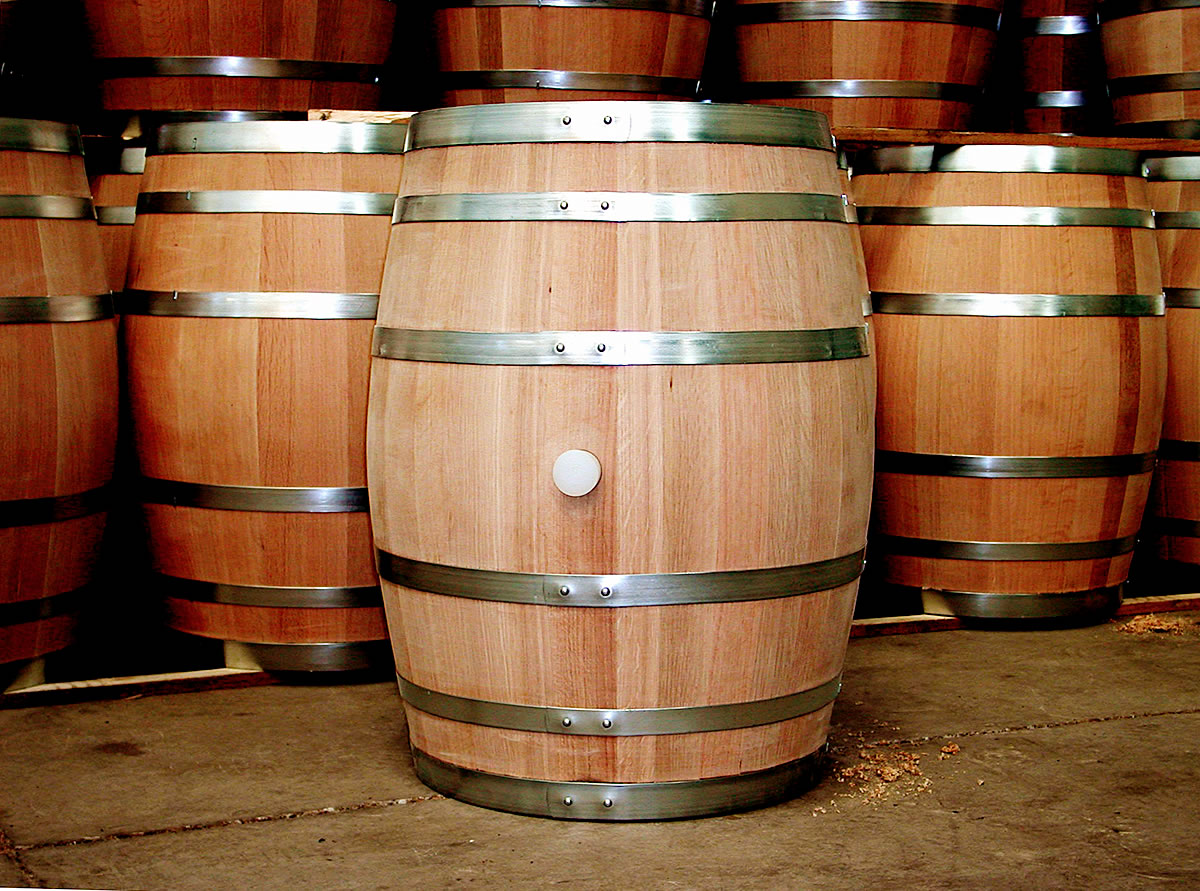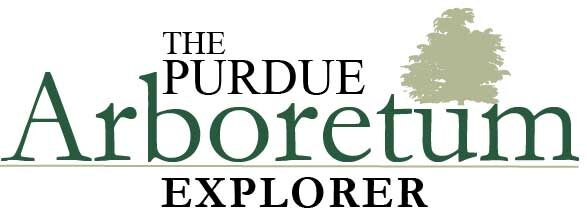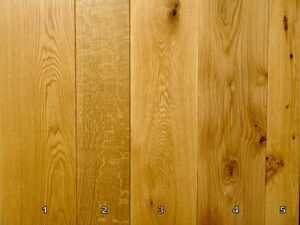Quercus alba
Summary
White Oak, or Quercus alba, has been used for a variety of things throughout history, such as log cabins, ships,
wagon wheels, and furniture. White Oak is commonly a light straw color to medium brown color with long ray streaks
throughout. This material is very resistant to decay and is one of the best woods for steam bending.
Looking at the panels on the wall from left to right. Board one is a top grade flat sawn board. The left one-third of
this board is typical of rift white oak. Board two is an example of quarter sawn white oak. Here you can see the ray
fleck in the wood and the long parallel grain lines. Boards three and four are average examples of flat sawn white
oak. In board four you can see some clusters of pin knots which is typical for white oak to have. Board five shows a
large round grub hole toward the top as well as a scar from grub damage. It is typical for mineral stain or
discoloration to occur around grub hole damage. You may notice that some of the boards glisten in the light. This is
because white oak is filled with tyloses, which can be seen in the end grain example on this webpage.
History
It was used for durable bottom logs in cabins, ships, and most importantly for wagons. As a major component of wagon
wheels and other high-strength parts, it carried the settlers even further west and supplied both the North and
South with the means to transport artillery and other heavy items used in the Civil War. As the country continued to
develop, the last of the old growth timber was sawed into quartered and rift lumber. It was used for the Arts and
Crafts Movement and Mission Style furniture and to decorate railroad passenger cars.
Color & Texture
White oak wood can vary from a very light straw color, which is currently preferred, to a brown color. The wood can
also be mottled with gray. Occasionally, slow growth old trees will produce boards with a pink color
Anatomical and Microscopy
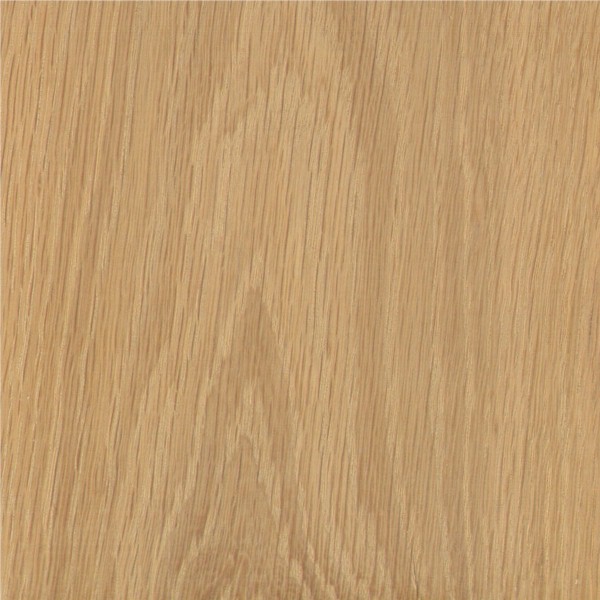
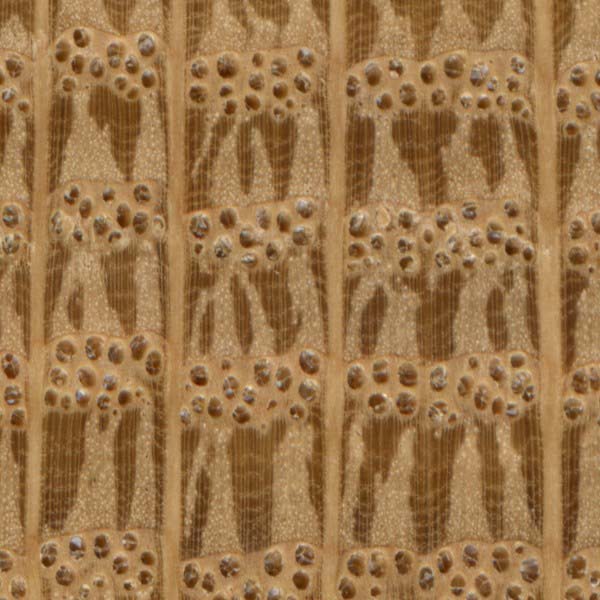
Ring-porous; 2-4 rows of large, exclusively solitary earlywood pores, numerous small to very small latewood pores
in radial arrangement; tyloses abundant; growth rings distinct; rays large and visible without lens; apotracheal
parenchyma diffuse-in-aggregates (short lines between rays).
Wood Properties
- Workability
- One of the best woods for machining as it cuts cleanly with little tearing or fuzzing
- Strength
- Excellent mechanical or strength properties
- Steam Bending
- One of the best woods for bending
- Drying
- Lumber is difficult to dry, and a mild kiln schedule must be used
- Shrinkage
- Highest shrinkage next to hickory
- Decay
- Moderate to very resistant to decay
Products
White oak is preferred for interior decorative applications ranging from furniture (especially church furniture),
cabinets, millwork, and hardwood flooring.
It is also good for long term exterior applications ranging from caskets, fence posts, fence boards, sill plates,
trailer beds, mine timbers, railroad ties, and barrels
